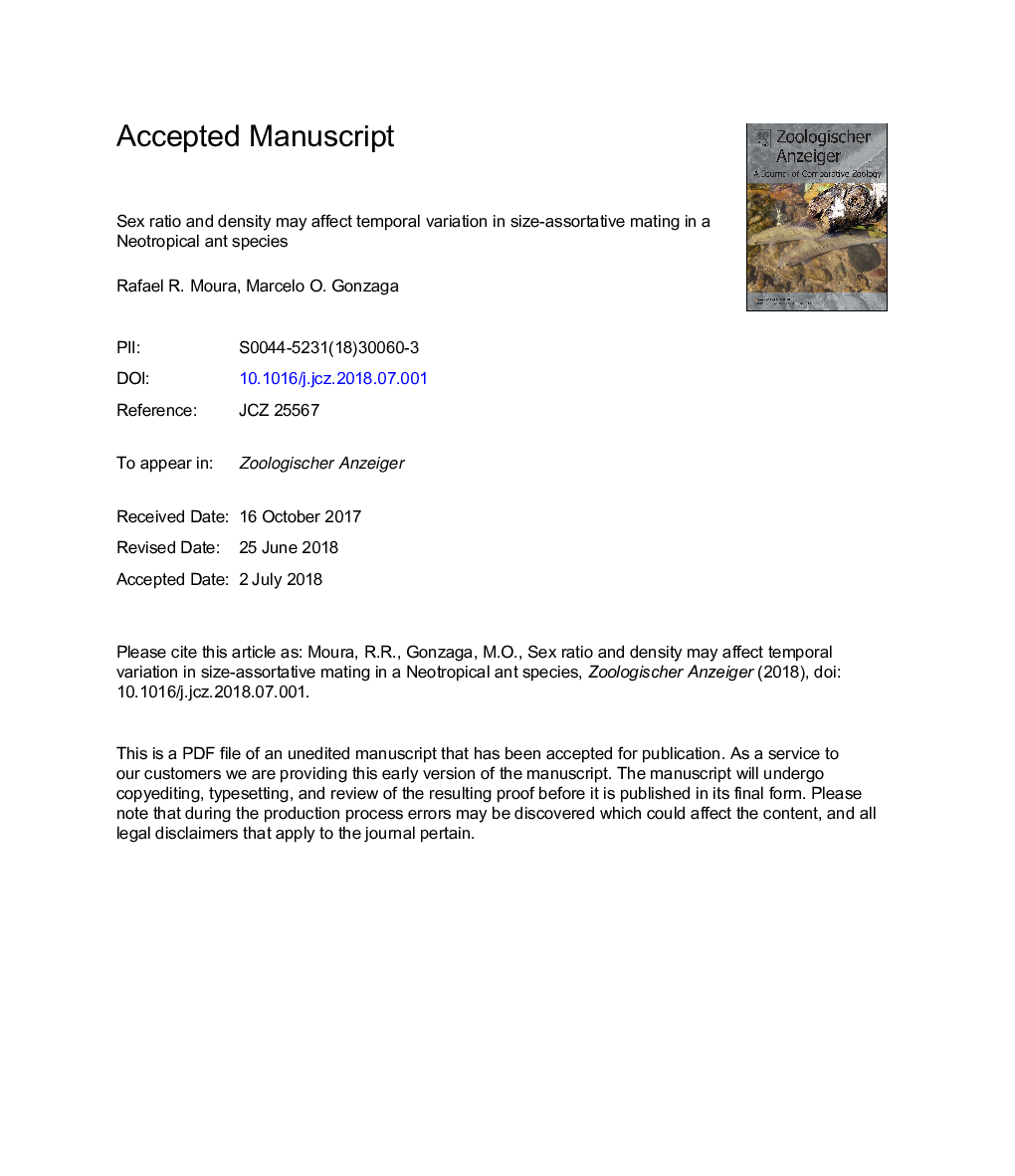| کد مقاله | کد نشریه | سال انتشار | مقاله انگلیسی | نسخه تمام متن |
|---|---|---|---|---|
| 10137865 | 1645797 | 2018 | 33 صفحه PDF | دانلود رایگان |
عنوان انگلیسی مقاله ISI
Sex ratio and density may affect temporal variation in size-assortative mating in a Neotropical ant species
ترجمه فارسی عنوان
نسبت جنسی و تراکم ممکن است تغییرات زمانی را در جفت گیری اندازه اندازه گیری در یک گونه مورچه نئوتروپیک تأثیر بگذارد
دانلود مقاله + سفارش ترجمه
دانلود مقاله ISI انگلیسی
رایگان برای ایرانیان
کلمات کلیدی
موضوعات مرتبط
علوم زیستی و بیوفناوری
علوم کشاورزی و بیولوژیک
علوم دامی و جانورشناسی
چکیده انگلیسی
Size-assortative mating (SAM) is common in animals, especially in insects, owing to the influence of body size on mate choice and fitness in both sexes. According to sexual selection theory, choosiness in mate selection may decrease when the costs of intrasexual competition and mate choice increase. Thus, scenarios with intense mating competition (i.e. with high population density and highly biased sex ratio) should weaken SAM. In this study, we tested this hypothesis in mating aggregations of the ant Tranopelta gilva. During mating swarm, population density and male-bias in sex ratios may increase with time, promoting changes in SAM. Considering this potential variation in SAM, we hypothesized that (a) T. gilva ants assortatively mate by size when male mating competition is weak; (b) larger males win most intrasexual disputes; and (c) there is no significant variation in body size among individuals arriving earlier and later during mating aggregations. We attracted winged ants to open plastic arenas, placed under artificial light at night in a protected area of the Brazilian Savanna. Two intensities of mating competition were comparatively evaluated in the arenas: 'weakly competitive' (low ant density and a slightly male-biased sex ratio) and 'intense competitive' conditions (high ant density and strongly male-biased sex ratio). Assortative mating in T. gilva occurred only when mating competition was weak. Male size was not important in male-male competition and large males did not arrive first at mating aggregations. Because male-male competition did not explain variations in SAM, we suggest that female choice at low densities and male harassment at high densities would explain these variations. In conclusion, mating competition may affect temporal variation in SAM of T. gilva.
ناشر
Database: Elsevier - ScienceDirect (ساینس دایرکت)
Journal: Zoologischer Anzeiger - Volume 276, September 2018, Pages 50-56
Journal: Zoologischer Anzeiger - Volume 276, September 2018, Pages 50-56
نویسندگان
Rafael R. Moura, Marcelo O. Gonzaga,
